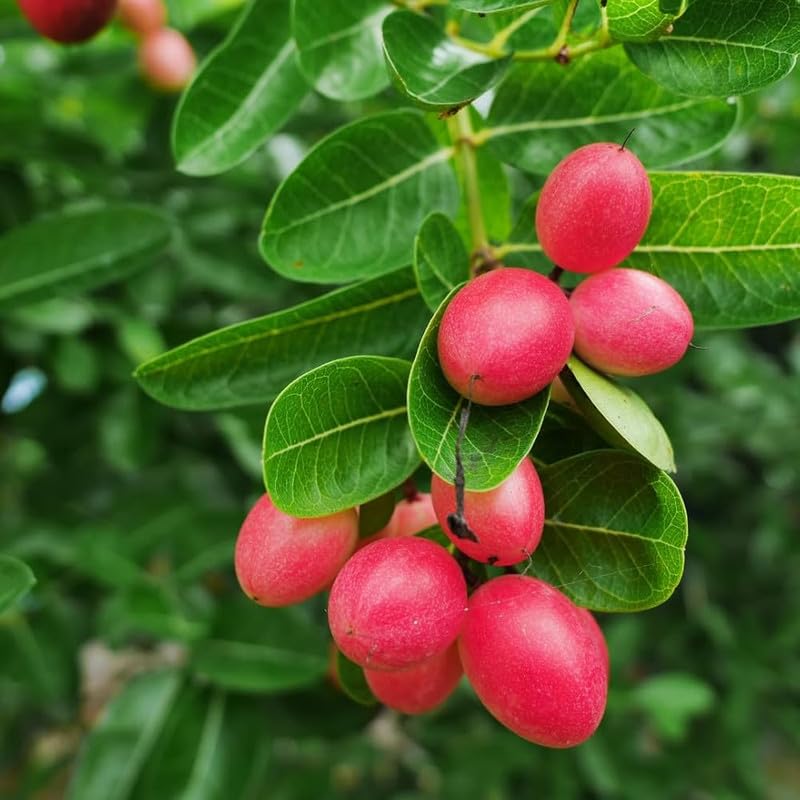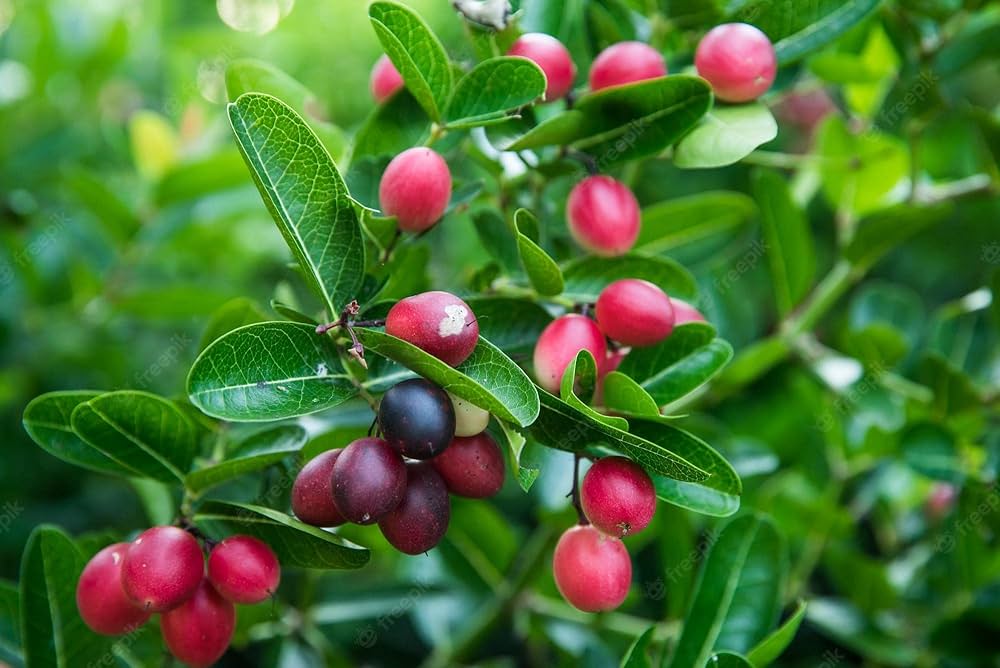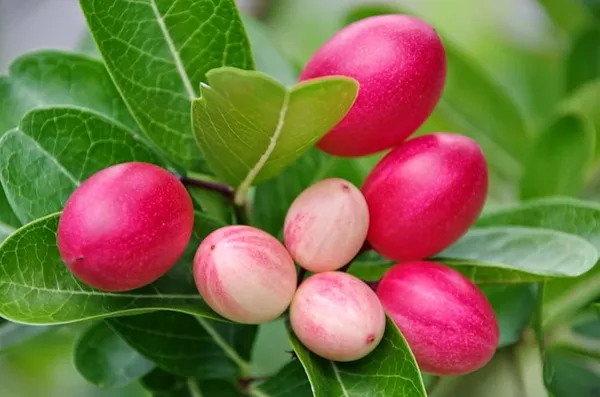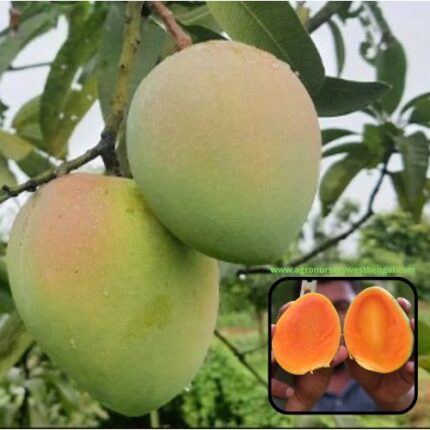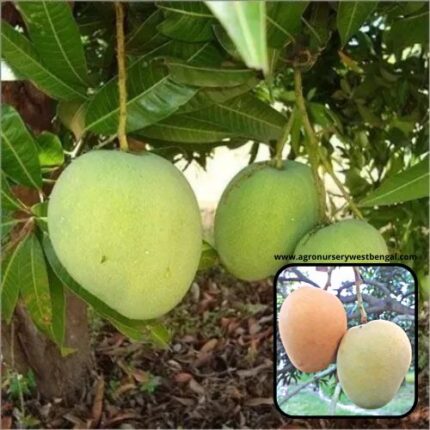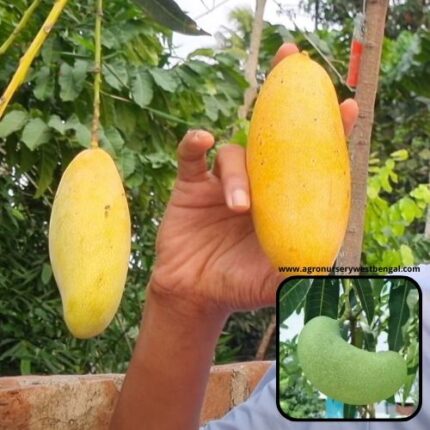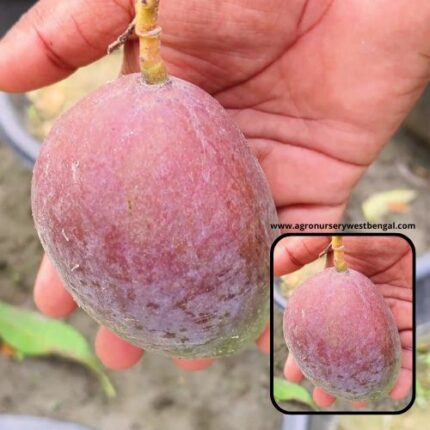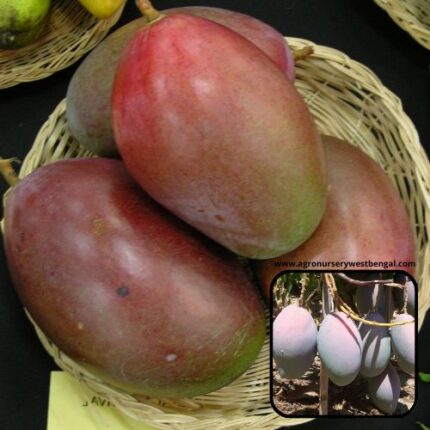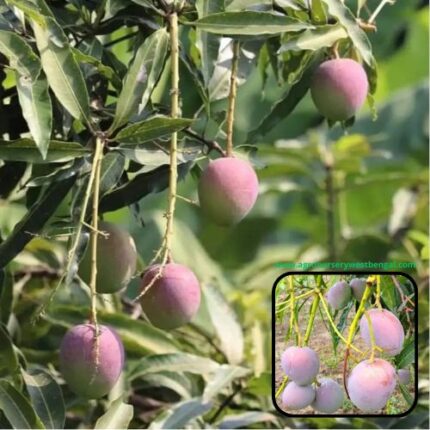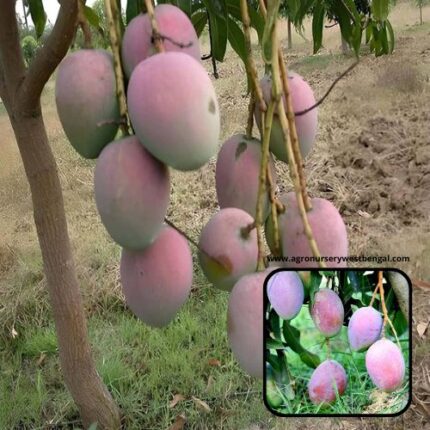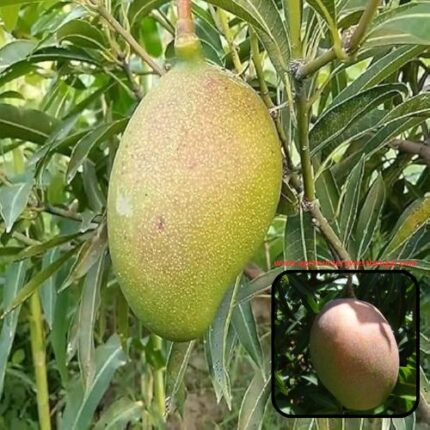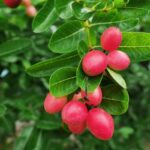
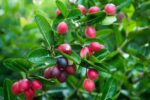

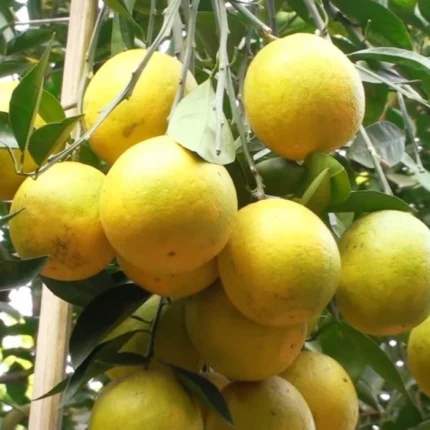
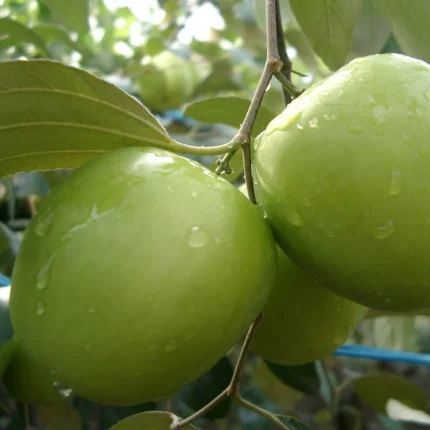
Karonda fruit plants
₹799 Original price was: ₹799.₹499Current price is: ₹499.
The Karonda fruit plant (Carissa carandas) is a popular and versatile shrub or small tree, especially in India and Southeast Asia. It’s valued for its tangy fruits, which are used in various culinary preparations, and its hardy nature, making it a good choice for home gardens and even in sustainable agriculture due to its drought resistance.
Here’s a breakdown of key information about Karonda fruit plants:
Botanical Information:
- Family: Apocynaceae
- Common Names: Karonda, Karanda, Bengal Currant, Christ’s Thorn, Carandas Plum, Karvand, Kavali hoovu, Peddakalavi, Koromcha.
- Characteristics: It’s a thorny, evergreen shrub or small tree, typically growing 2-5 meters (6-16 feet) tall. It has glossy green leaves and small, star-shaped, white, mildly fragrant flowers. The oval-shaped fruits start green and ripen to deep pink or purple.
Growing Conditions and Care:
- Climate: Prefers hot, tropical to subtropical climates. It’s highly drought-tolerant and thrives in arid and semi-arid regions. High rainfall and waterlogged areas can affect its growth.
- Sunlight: Requires bright, direct sunlight for maximum fruit production (at least 6 hours a day).
- Soil: Adaptable to a wide range of soils, including sandy, loamy, or rocky soils, as long as they have good drainage. It can even grow in stony, less fertile soils, but alluvial sandy loam soils with good drainage are ideal for better growth and yield.
- Watering: Once established, it needs minimal watering, making it very drought-tolerant. Water thoroughly in summer when the top 3-4 inches of soil feel dry, and reduce watering in winter and rainy seasons. Avoid overwatering.
- Propagation: Can be propagated through seeds, cuttings, or air layering. Plants grown from seeds typically start bearing fruit after 2-3 years. Vegetative propagation methods like budding and inarching are also practiced.
- Fertilization: Apply organic compost or manure annually, especially during the main growing season (January-March or June-July, depending on the region). Loosen the topsoil before applying fertilizer.
- Pruning: Prune regularly to maintain shape and encourage new growth, ideally after the fruiting season.
- Pests and Diseases: Generally hardy, but can be susceptible to issues if not properly cared for. Good air circulation and avoiding waterlogging help prevent problems.
Flowering and Fruiting:
- Bloom Time: Generally flowers from March to April, or even February to June in some regions. In tropical regions, it can bloom throughout the year, with a peak from spring through autumn.
- Fruiting Time: Fruits ripen from July to September in Northern India. Fruiting typically starts 2-3 years after planting.
Uses and Benefits:
- Culinary: The tangy fruits are widely used for making pickles, jams, jellies, chutneys, squashes, and syrups. Unripe fruits are particularly popular for pickling. They can also be eaten fresh when fully ripe (sweeter varieties).
- Nutritional Value: Rich in iron, Vitamin C, Vitamin A, calcium, and phosphorus.
- Health Benefits:
- Immunity Booster: High in Vitamin C, it strengthens immunity.
- Digestive Health: Fiber content aids digestion, prevents constipation, and promotes regular bowel movements.
- Heart Health: Antioxidants, fiber, and potassium contribute to cardiovascular health by reducing bad cholesterol, regulating blood pressure, and improving circulation.
- Manages Diabetes: Low glycemic index and certain compounds help regulate blood sugar levels.
- Anti-inflammatory and Antioxidant: Fights harmful free radicals and reduces inflammation, potentially reducing the risk of chronic diseases like arthritis.
- Iron Levels: Rich in iron, it helps prevent anemia.
- Skin and Hair Health: Vitamins and antioxidants support healthy skin and hair.
- Other Uses:
- Natural Fence: Its thorny branches make it an excellent natural fence.
- Soil Enrichment: Roots help prevent soil erosion and improve soil quality.
- Biodiversity: Flowers attract pollinators, and fruits are a food source for wildlife.
- Agroforestry: Can be integrated into agroforestry systems.
Important Note: While the fruit is edible and beneficial, the plant itself contains compounds that can be toxic to pets and humans if ingested in large quantities. Keep out of reach of children and pets.
If you’re looking to grow Karonda, it’s a relatively low-maintenance plant that can be quite rewarding, especially if you enjoy tangy fruits for culinary purposes.

